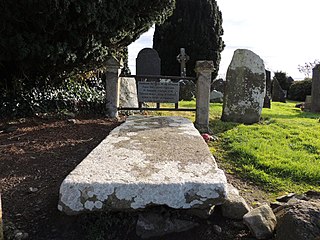
Edward Bruce, Earl of Carrick, was a younger brother of Robert the Bruce, King of Scots. He supported his brother in the 1306–1314 struggle for the Scottish crown, then pursued his own claims in Ireland. Proclaimed High King of Ireland in 1315 and crowned in 1316, he was eventually defeated and killed by Anglo-Irish forces of the Lordship of Ireland at the Battle of Faughart in County Louth in 1318.
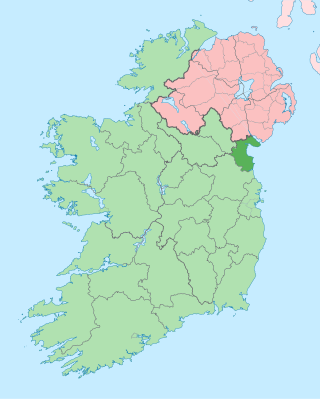
County Louth is a coastal county in the Eastern and Midland Region of Ireland, within the province of Leinster. Louth is bordered by the counties of Meath to the south, Monaghan to the west, Armagh to the north and Down to the north-east, across Carlingford Lough. It is the smallest county in Ireland by land area and the 17th most populous, with just over 139,100 residents as of 2022. The county is named after the village of Louth. Louth County Council is the local authority for the county.

Baron Athenry is one of the oldest titles in the Peerage of Ireland, but the date of its creation is thoroughly uncertain; each of the first four Berminghams listed below is claimed by some writers to have been Lord Athenry, but the evidence is disputed. The title appears to have been given to the de Birmingham family of Birmingham, Warks, England as a reward for their help in the Norman invasion of Ireland in 1172. Both Sir William de Birmingham, and his son Robert de Birmingham, are variously claimed to have been involved in the invasion, but it is probable that, after the invasion, William returned to his home in England and left Robert their new lands in Ireland.
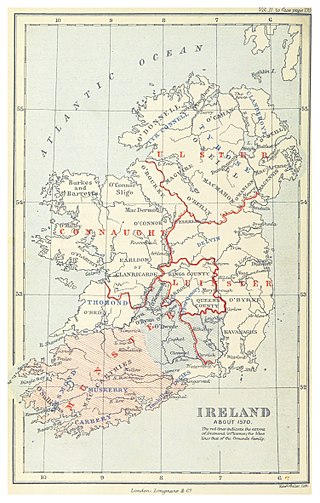
The Desmond Rebellions occurred in 1569–1573 and 1579–1583 in the Irish province of Munster. They were rebellions by the Earl of Desmond, the head of the FitzGerald dynasty in Munster, and his followers, the Geraldines and their allies, against the threat of the extension of the English government over the province. The rebellions were motivated primarily by the desire to maintain the independence of feudal lords from their monarch but also had an element of religious antagonism between Catholic Geraldines and the Protestant English state. They culminated in the destruction of the Desmond dynasty and the plantation or colonisation of Munster with English Protestant settlers. 'Desmond' is the Anglicisation of the Irish Deasmumhain, meaning 'South Munster'.

Ó Fearghail is a family name of the Irish nobility from County Longford who were historically the Princes of Annaly. The patronym means "descendant of Fearghail", whose name means "man of valour". Fearghail was a great-grandson of Angaile, the 10th-century King of Fortúatha who conquered and gave his name to Annaly, and his Ó Fearghail descendants were the Princes of Annaly for 6 centuries. Angaile was chief of the Conmhaícne Angaile. The lineage of Fearghail produced chiefs of the Dál Messin Corb and the Uí Garrchon. English forms of the surname include O'Farrell, O'Ferrall and Farrell.
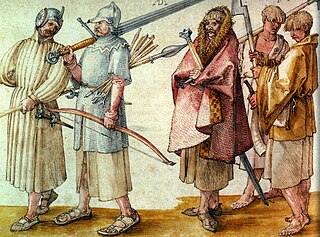
Gaelic warfare was the type of warfare practiced by the Gaelic peoples, in the pre-modern period.

The Bruce campaign was a three-year military campaign in Ireland by Edward Bruce, brother of the Scottish king Robert the Bruce. It lasted from his landing at Larne in 1315 to his defeat and death in 1318 at the Battle of Faughart in County Louth. It was part of the First War of Scottish Independence against England, and the conflict between the Irish and Anglo-Normans.
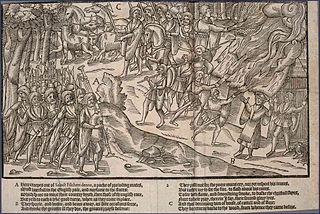
A kern was a Gaelic warrior, specifically a light infantryman, in Ireland in the late Middle Ages.
Events from the year 1329 in Ireland.
Rickard de Bermingham, otherwise Rickard Mac Fheorais, was Anglo-Irish lord of Athenry.

Bermingham is the Gaelicised version of 'De Birmingham' and is descended from the family of Warwickshire, England. The Irish version of the name MacFeorais/MacPheorais is derived from Pierce de Bermingham. The first recorded Bermingham in Ireland, Robert de Bermingham accompanied Richard de Clare or 'Strongbow' in Henry II's conquest of Ireland in 1172. On arrival he received: "an ancient monument, valued at 200 pounds, on which was represented in brass the landing of the first ancestor of the family of Birmingham in Ireland."
John de Bermingham, 1st and last Earl of Louth was an Irish peer. He was the commander of the Anglo-Irish army in the Battle of Faughart, the decisive battle in the Irish Bruce Wars 1315–1318. In this battle, Edward Bruce was killed, and Bermingham had Bruce's severed head 'salted in a chest' and transported to England to be put on display before Edward II. He was briefly Viceroy of Ireland in 1321.
Meyler de Bermingham was an Anglo-Irish lord, founder of Athenry.
Maol Ruanaidh Cam Ó Cearbhaill, otherwise An Giolla Caoch and Cam Ó Cearbhaill, sometimes anglicised as Cam O'Kayrwill was a notable Irish harpist and player of the tiompan, murdered with many others at the Braganstown Massacre.
William de Bermingham was Archbishop of Tuam.
There are numerous Bermingham monuments in Ireland particularly in counties Kildare, Offaly, Galway, and Dublin. Most are now in a poor state. Athenry Castle in Galway has been restored, using building techniques similar to those employed when it was originally built.
Events from the year 1580 in Ireland.
Sir Simon Fitz-Richard was an Irish landowner, barrister and judge. He became Chief Justice of the Irish Common Pleas, and fought a long and successful campaign against the efforts of his enemies to remove him from office, despite the numerous accusations of corruption which were made against him.
John Bermyngham or Bermingham was an Irish barrister and judge. He was one of the first Crown Law officers to be referred to as the King's Serjeant. He was later appointed Lord Chief Justice of Ireland, but did not take up the office.
The Battle of Thomond was fought in Ireland on 14 July 1328 between the forces of William de Burgh and an army led by Brian Bán Ó Briain, Lord of Thomond. It was fought near Thurles in modern County Tipperary and featured powerful Gaelic and Anglo-Irish figures on both sides.







